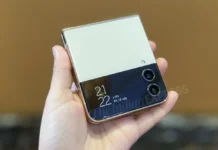Phone cameras have come a long way since their inception. Gone are the days of VGA cameras with blurry, low-resolution images. Today, mobile phone cameras are equipped with high-tech sensors, advanced image stabilization, and powerful software that can capture breathtaking photos and videos. In this article, we’ll take a closer look at the evolution of mobile phone cameras from VGA to 108MP.
VGA Cameras (1999-2004)
The first phone camera was introduced in 1999 by Sharp. The camera had a resolution of just 0.11 megapixels, or 352 x 288 pixels. This was the VGA (Video Graphics Array) era, and the cameras produced blurry, low-quality images with poor color reproduction.
1MP Cameras (2004-2007)
In 2004, mobile phone cameras upgraded to 1 megapixel. Nokia was the first to introduce the 1MP camera on their Nokia 7610 model. This allowed users to take photos with a resolution of 1152 x 864 pixels. However, the images still lacked detail and sharpness.
3MP Cameras (2007-2010)
In 2007, Sony Ericsson introduced the K850i, the first mobile phone with a 3.2-megapixel camera. This marked a significant improvement in the quality of mobile phone cameras. The images were sharper, and the colors were more vibrant. The camera also had an autofocus feature, which allowed for better focusing on objects.
5MP Cameras (2010-2012)
In 2010, Samsung introduced the Pixon12, the first mobile phone with a 12-megapixel camera. This phone had a 5-megapixel camera with LED flash, 28mm wide-angle lens, and 3x optical zoom. This marked a significant improvement in the quality of mobile phone cameras. The images were even sharper and had more detail.
Must Read: vivo Goes Above and Beyond — Netmag’s Experience at vivo’s Customer Service Centre
8MP Cameras (2012-2015)
In 2012, Nokia introduced the Lumia 920, the first mobile phone with an 8-megapixel camera. This phone had image stabilization, which allowed for better low-light performance and smoother video recording. This technology also helped in reducing camera shake, resulting in sharper and more detailed images.
16MP Cameras (2015-2018)
In 2015, Samsung introduced the Galaxy S6, which had a 16-megapixel camera. This phone also introduced optical image stabilization (OIS), which allowed for better low-light performance and sharper images. The camera also had a wider aperture, which helped in capturing more light.
48MP Cameras (2018-2020)
In 2018, Sony introduced the IMX586, a 48-megapixel sensor, which was used in many mobile phone cameras. The sensor used pixel binning technology, which combined four pixels into one, resulting in better image quality in low-light conditions. This technology also helped in capturing more detail in the images.
108MP Cameras (2020-2023)
In 2020, Samsung introduced the Galaxy S20 Ultra, which had a 108-megapixel camera. This marked a significant milestone in the evolution of mobile phone cameras. The camera had advanced image stabilization and a large sensor, which allowed for better low-light performance and sharper images. The camera also had a telephoto lens, which allowed for better zoom capabilities.
Conclusion
The evolution of mobile phone cameras has been truly remarkable. From the early days of VGA cameras to the latest 108MP cameras, we’ve seen an incredible amount of progress in just a few short years. As mobile phone cameras continue to advance, it’s likely that they will become even more important in our daily lives, allowing us to capture high-quality photos and videos wherever we go.




